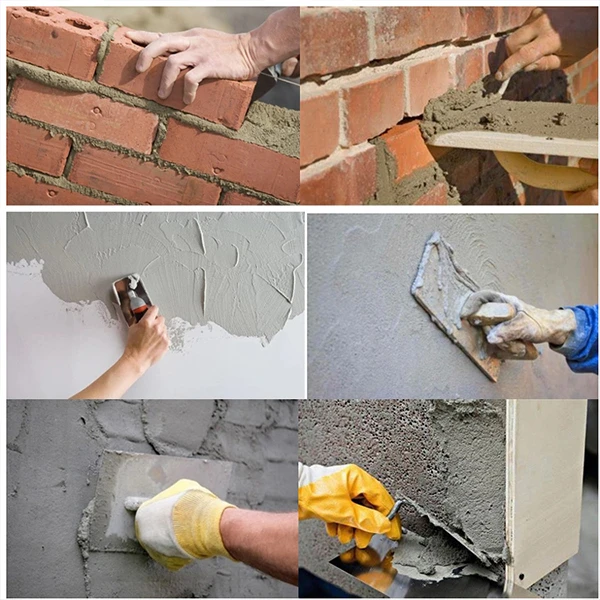The Role of Cellulose and HPMC in Paint Formulations
In the world of coatings and paints, achieving the right texture, consistency, and performance is paramount. Among the myriad of ingredients used in paint formulations, cellulose and hydroxypropyl methylcellulose (HPMC) have gained prominence for their unique properties and versatility. This article delves into the significance of cellulose and HPMC in paint, exploring their functions, benefits, and implications for the painting industry.
Understanding Cellulose and HPMC
Cellulose is a natural polymer derived from plant cell walls. It is biodegradable, non-toxic, and readily available. Due to its unique molecular structure, cellulose offers excellent mechanical flexibility, which helps enhance the durability of paint films. The derivatives of cellulose, particularly HPMC, have garnered attention for their remarkable properties. HPMC is a water-soluble cellulose ether that is widely used in various applications, including pharmaceuticals, cosmetics, and construction. In the context of paints, HPMC serves several critical functions that can improve formulation performance.
Thickening Agent
One of the primary roles of HPMC in paint formulations is that of a thickening agent. Paints with optimal viscosity are easier to apply and provide better coverage. HPMC helps achieve the desired viscosity by increasing the paint's thickness, allowing for improved control during application. This is particularly important for paints that require brush application or rolling, as it prevents drips and runs, ensuring a smooth finish.
Film-Forming Properties
In addition to being an effective thickener, HPMC contributes to the film-forming properties of paint. Once applied, paints must dry and form a continuous film over the surface to provide protection and durability. HPMC aids in the formation of a strong and elastic film, which enhances adhesion, flexibility, and resistance to cracking. This is crucial for outdoor applications where environmental factors such as UV radiation, moisture, and temperature fluctuations can impact paint performance.
cellulose hpmc for paint

Improved Stability and Shelf Life
Another notable benefit of incorporating cellulose and HPMC in paint formulations is the improved stability they provide. HPMC helps to stabilize pigments and other solid components within the paint, preventing settling and separation over time. This stability prolongs the shelf life of the paint, allowing manufacturers to maintain consistent quality and reduce waste. For consumers, stable paint formulations translate to better performance, ensuring that they achieve desired results when using the product.
Water Retention and Open Time
In many painting applications, especially when working with porous substrates, water retention is vital for optimal results. HPMC enhances the water retention properties of paint, allowing the product to remain workable for longer periods during application. This extended “open time” allows painters to manipulate the paint for blending, smoothing, or detailing without the risk of early drying. As a result, this feature is particularly beneficial for professional painters who demand high levels of performance and flexibility during their projects.
Eco-Friendly Considerations
Given the increasing emphasis on sustainability and eco-friendliness in the paint industry, cellulose and HPMC stand out as environmentally-conscious options. Being derived from natural sources, cellulose is a renewable material, and HPMC is biodegradable. The use of these components aligns with consumer demand for greener products while ensuring that paints maintain high standards of performance and quality. Additionally, the incorporation of natural additives can reduce the reliance on synthetic, petroleum-based compounds that may pose environmental hazards.
Conclusion
Cellulose and HPMC have established themselves as indispensable ingredients in modern paint formulations, bringing a plethora of benefits that enhance performance and sustainability. Their roles as thickening agents, stabilizers, and film-formers play a crucial part in ensuring that paints apply smoothly, dry effectively, and last longer. As the demand for eco-friendly and high-performance paints continues to grow, the importance of cellulose and HPMC in the industry cannot be overstated. By integrating these natural components, manufacturers not only meet consumer expectations but also contribute to a more sustainable future in the coatings industry. The evolution of paint formulation, eluding towards environmentally responsible practices coupled with effective performance, signifies a positive shift that is likely to shape the industry for years to come.
-
Rdp Powder: Key Considerations for Wholesalers in the Building Materials IndustryNewsJul.08,2025
-
Key Considerations for Wholesalers: Navigating the World of Hpmc - Based ProductsNewsJul.08,2025
-
Hpmc Detergent: Key Considerations for WholesalersNewsJul.08,2025
-
Key Considerations for Wholesalers: China Hpmc For Tile Adhesive, Coating Additives, Concrete Additives, and MoreNewsJul.08,2025
-
Crucial Considerations for Wholesalers: Navigating the World of Construction MaterialsNewsJul.08,2025
-
Key Considerations for Wholesalers Sourcing Additive For Cement, Additive For Concrete, Additive For Putty from Additive Manufacturer Shijiazhuang Gaocheng District Yongfeng Cellulose Co., Ltd.NewsJul.08,2025




